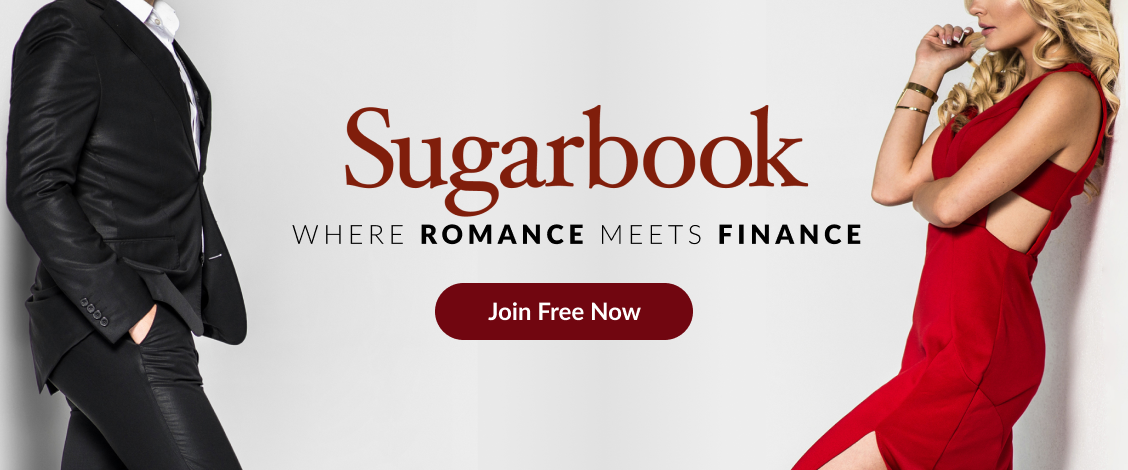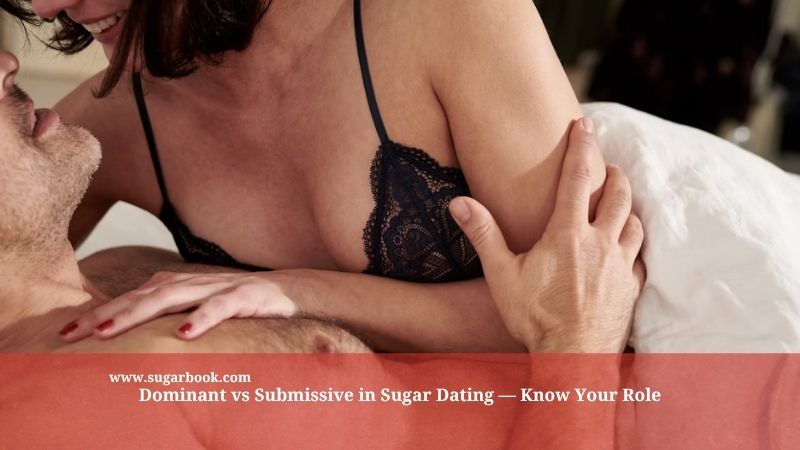
Meet successful sugar daddies and confident sugar babies on the world’s leading sugar dating app. Join free today.
The sugar dating world is full of nuance, and when it comes to relationship dynamics, few concepts generate more intrigue and misunderstanding than dominant vs submissive. From BDSM-inspired terms to emotional or financial leadership, these roles go beyond the bedroom and shape how sugar relationships are structured.
But how do these roles play out on platforms like Sugarbook? Is a sugar daddy always dominant? Does being submissive mean giving up power? And how do you explore these identities without crossing the line into coercion?
This article unpacks the core ideas behind dominant vs submissive, how they translate into sugar culture, and how you can identify and embrace your role — with safety, clarity, and consent.
Contents
- Dominant vs Submissive: What Do These Roles Mean?
- How These Roles Show Up in Sugar Dating
- Safe Expression of Dominant vs Submissive Energies
- Clear Communication Is Key
- Dominant vs Submissive in Kink vs Lifestyle Sugar Dating
- Common Misunderstandings in the Dom/Sub Conversation
- Conclusion: Power with Purpose in Sugar Dating Dynamics
Dominant vs Submissive: What Do These Roles Mean?
Origins of the Dom/Sub Dynamic
The dominant vs submissive concept has roots in BDSM and kink communities, where partners consciously agree to play specific roles. Dominance typically involves taking the lead, while submission involves yielding control — either in a physical, emotional, or lifestyle context.
Importantly, these roles are chosen, not imposed.
Traits of a Dominant Partner
In a sugar dating or kink-informed relationship, a dominant partner may be someone who:
-
Takes initiative
-
Sets the tone and structure of the relationship
-
Provides financial, emotional, or mentorship support
-
Leads with confidence and assertiveness
Dominance doesn’t mean being controlling or forceful — it’s about responsible leadership.
Traits of a Submissive Partner
Submissives are not weak — quite the opposite. They are partners who willingly choose to:
-
Be guided or cared for
-
Find pleasure in obedience, service, or yielding control
-
Receive structure or discipline
-
Feel safe under a strong partner’s influence
In sugar relationships, submission can show up as trust, vulnerability, and openness to direction — not powerlessness.
How These Roles Show Up in Sugar Dating
Is Sugar Dating Always Dominant vs Submissive?
Not all sugar relationships involve dominant vs submissive roles. Many sugar daters are looking for:
-
Equal companionship
-
Mutually beneficial mentorship
-
Shared goals without kink influence
That said, dom/sub energy can emerge naturally, especially when one partner provides more guidance, structure, or financial support.
Emotional and Financial Control Dynamics
In sugar dating, financial dominance is sometimes mistaken for emotional control. While one party may fund the lifestyle, the true balance lies in mutual consent. Submissive sugar babies can retain emotional autonomy while enjoying the benefits of structure and security.
Similarly, dominant sugar daddies or sugar mommies aren’t inherently manipulative — they may simply prefer to lead in:
-
Travel planning
-
Career advice
-
Relationship terms
What matters is that both parties agree on who holds which responsibilities.
The Balance of Power and Pleasure
A healthy dominant vs submissive sugar relationship is one where:
-
The dominant respects the limits of the submissive
-
The submissive consents without pressure or guilt
-
Power brings comfort, not fear
When practiced correctly, dom/sub dynamics can make sugar relationships more meaningful, aligned, and secure.
Safe Expression of Dominant vs Submissive Energies
Consent as the Foundation of Dom/Sub Sugar Relationships
Consent is everything in dominant vs submissive dynamics — especially in sugar dating. Unlike coercive or manipulative behavior, ethical dominance or submission is negotiated and revisited regularly.
Both partners should:
-
Discuss their boundaries before acting on dom/sub energy
-
Create clear expectations around emotional, financial, or physical roles
-
Check in often to ensure continued consent
Platforms like Sugarbook emphasize these core values through safe communication channels and relationship education.
Avoiding Toxic Control or Manipulation
While dominance can feel empowering for both sides, it should never cross into toxic behavior like:
-
Threatening to withhold financial support
-
Disrespecting emotional or physical limits
-
Using power to shame or isolate a partner
True dominance is rooted in trust, structure, and responsibility. Submissives should always feel safe, valued, and in control of their ability to walk away.
Establishing Physical, Emotional, and Financial Boundaries
Every dom/sub sugar relationship is unique. Partners must define:
-
Physical limits (e.g., is touch involved? What kind?)
-
Emotional space (how deep is the intimacy?)
-
Financial roles (is there a fixed allowance, or gift-based support?)
Setting these rules early avoids misunderstanding and enhances mutual satisfaction.
Clear Communication Is Key
Dom/Sub Agreements and Negotiation Tips
Whether your sugar relationship includes dom/sub dynamics or not, it helps to treat it like an agreement:
-
Talk openly about what each partner wants
-
Discuss what dominance and submission look like in your dynamic
-
Decide how you’ll handle issues if they arise
A basic written or verbal contract — even a casual one — can help build confidence and emotional safety.
How Sugarbook Supports Safe Exploration
Sugarbook empowers users to explore dominant vs submissive energies by:
-
Allowing profile customization (interests, boundaries, goals)
-
Encouraging respectful dialogue
-
Giving users the tools to block/report inappropriate behavior
It’s not a kink platform — but it respects the emotional variety of modern relationships, including those that embrace power dynamics.
Red Flags and When to Reassess the Power Balance
Watch for signs that a dom/sub dynamic may be off balance:
-
You feel obligated, not inspired, to obey
-
Your limits are tested without consent
-
The dominant is inconsistent or punitive without warning
When this happens, pause and revisit your agreements. Even in structured dynamics, safety, care, and respect must be constant.
Dominant vs Submissive in Kink vs Lifestyle Sugar Dating
Some sugar relationships borrow terms from kink — like “dom,” “sub,” “brat,” or “master.” But others interpret dominance and submission as emotional roles:
-
A dominant sugar mama who guides a younger partner’s career
-
A submissive sugar baby who enjoys being pampered and directed
-
A couple who switches roles depending on mood or life situation
The versatility of dominant vs submissive relationships in sugar dating is part of what makes them so adaptable — and rewarding.
Common Misunderstandings in the Dom/Sub Conversation
| Misconception | Truth |
|---|---|
| Dominants must be aggressive | Dominance can be gentle, structured, and nurturing |
| Submissives are weak | Submission requires deep trust, confidence, and awareness |
| Dom/sub is only sexual | Power roles can be emotional, financial, or lifestyle-based |
| Sugar relationships must involve dom/sub | Many sugar relationships are equal or non-kink-based |
| You can’t change your role | Many people are switches — flexible in how they express themselves |
Conclusion: Power with Purpose in Sugar Dating Dynamics
Understanding the dominant vs submissive spectrum isn’t just for kink communities, it’s also essential in the evolving world of sugar relationships. These roles can be explored emotionally, financially, and romantically, as long as they’re rooted in mutual respect and consent.
For Sugarbook users, knowing your role — or being open to discovering it — is part of creating empowered, fulfilling relationships. Whether you’re a confident leader or a supportive follower, the most important trait is emotional clarity.
Because in modern sugar culture, power isn’t about control — it’s about connection, freedom, and self-expression.
FAQ
Q1: What does dominant mean in sugar dating?
A dominant sugar daddy or baby takes the lead in decisions, boundaries, or control, based on mutual consent.
Q2: Can sugar babies also be dominant?
Absolutely. Many sugar babies in 2025 prefer to lead the dynamic or split the power equally.
Q3: What do submissive sugar babies want?
They usually seek structure and confidence from their sugar daddy, with trust and communication as key pillars.
Q4: How do I know if I’m a dominant or submissive sugar daddy?
Pay attention to how you communicate, set rules, and handle control, and always talk with your sugar baby first.
Q5: Is dominance always sexual in sugar relationships?
Nope. It can show up in lifestyle dynamics, texting styles, or even who plans the dates.
New to sugar dating power dynamics? Start with our femdom guide.
Explore what sugar babies want in 2025 in this popular Sugarbook post.
Need help building confidence as a sugar daddy? Read how to find sugar babies near you.













